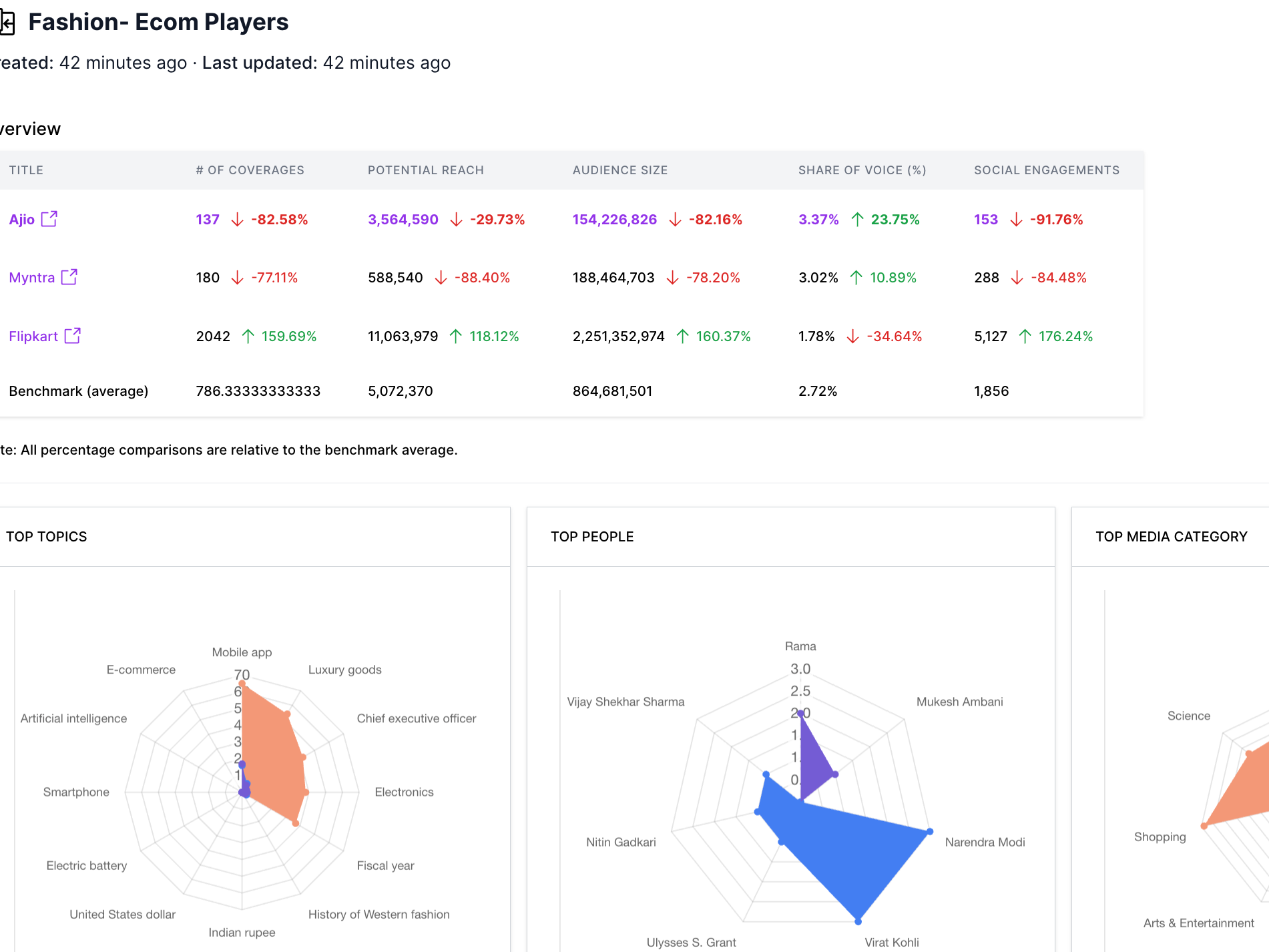Industry trends
April 17, 2024
Arkreach’s AI Breaks New Ground in Contextual Sentiment Analysis for Comms!
Discover the revolutionary power of Arkreach’s AI-powered Contextual Sentiment Analysis. This cutting-edge feature enables PR professionals to analyze sentiment with unprecedented precision, focusing…
February 27, 2024
Reinvent Your PR Plan: Progressive Metrics and Common Mistakes to Evade
To elevate your PR strategy, use top-tier metrics like article-level reach, audience persona analysis, Share of Voice (SoV), and smart media planning. Avoid common pitfalls, like using domain traffic…
February 22, 2024
Comparative Measurement Dashboards Now Available!
Arkreach introduces a new feature allowing for the direct comparison of various measurement dashboards. The feature supports multiple use cases such as comparing campaigns, benchmarking brands,…




